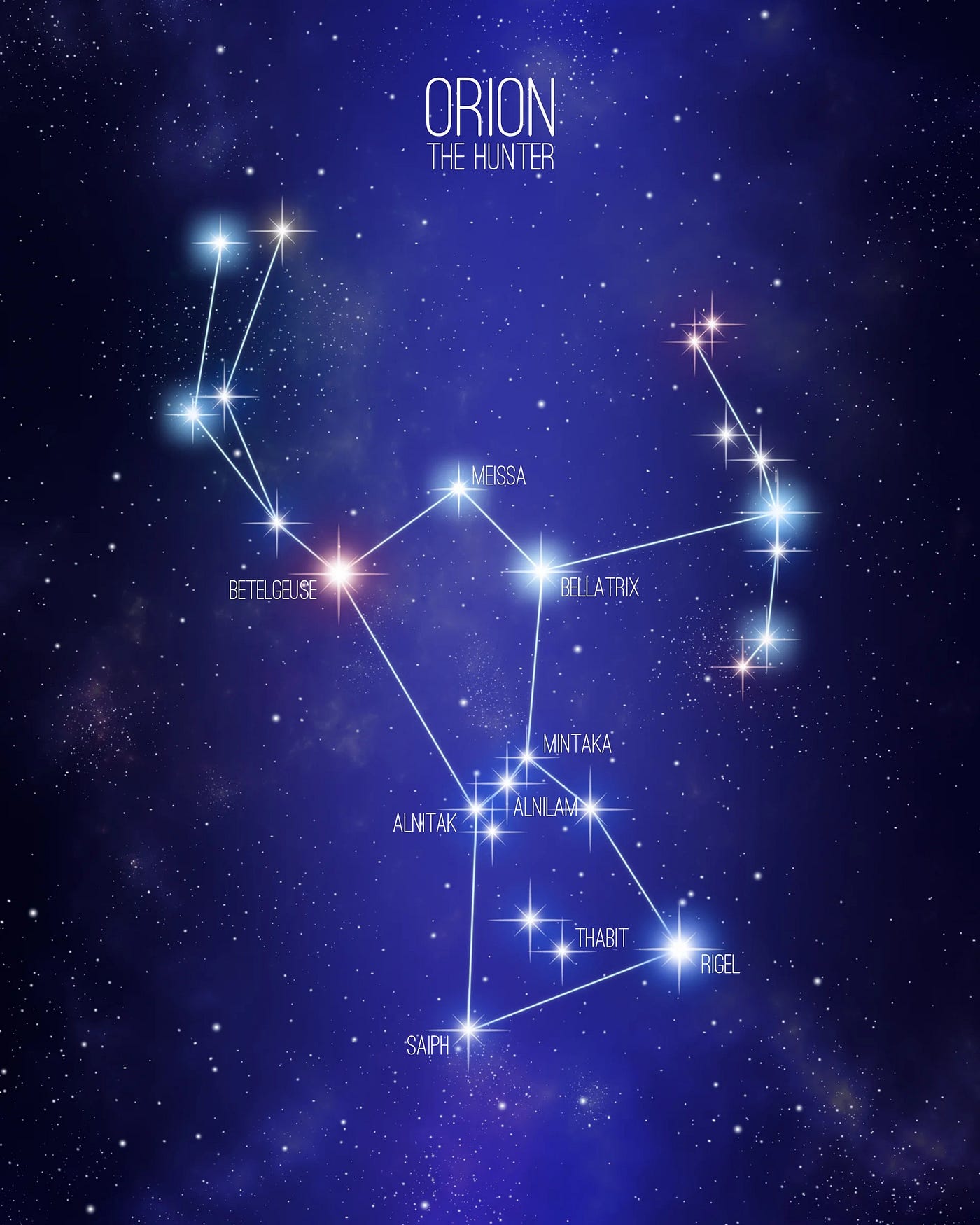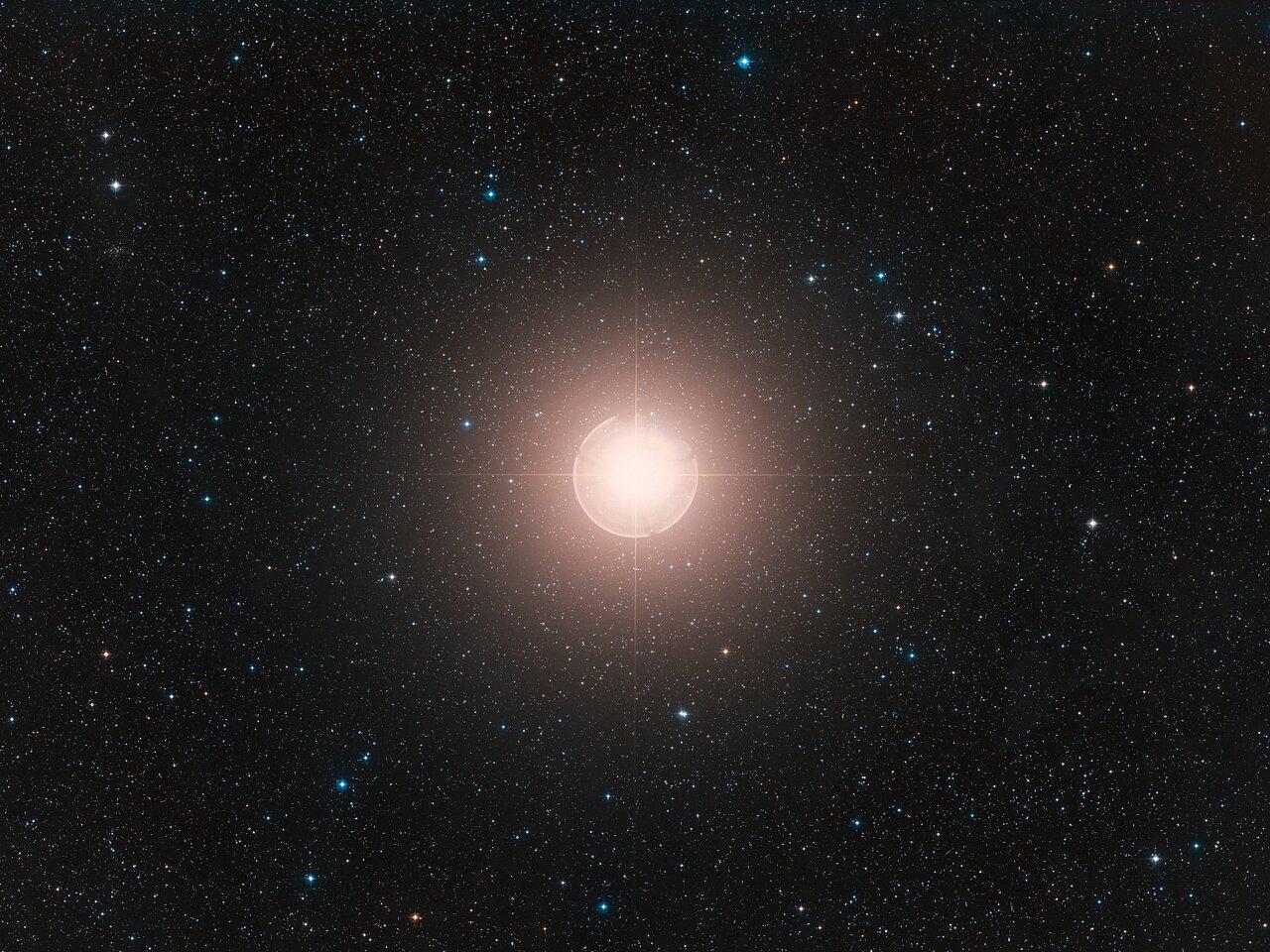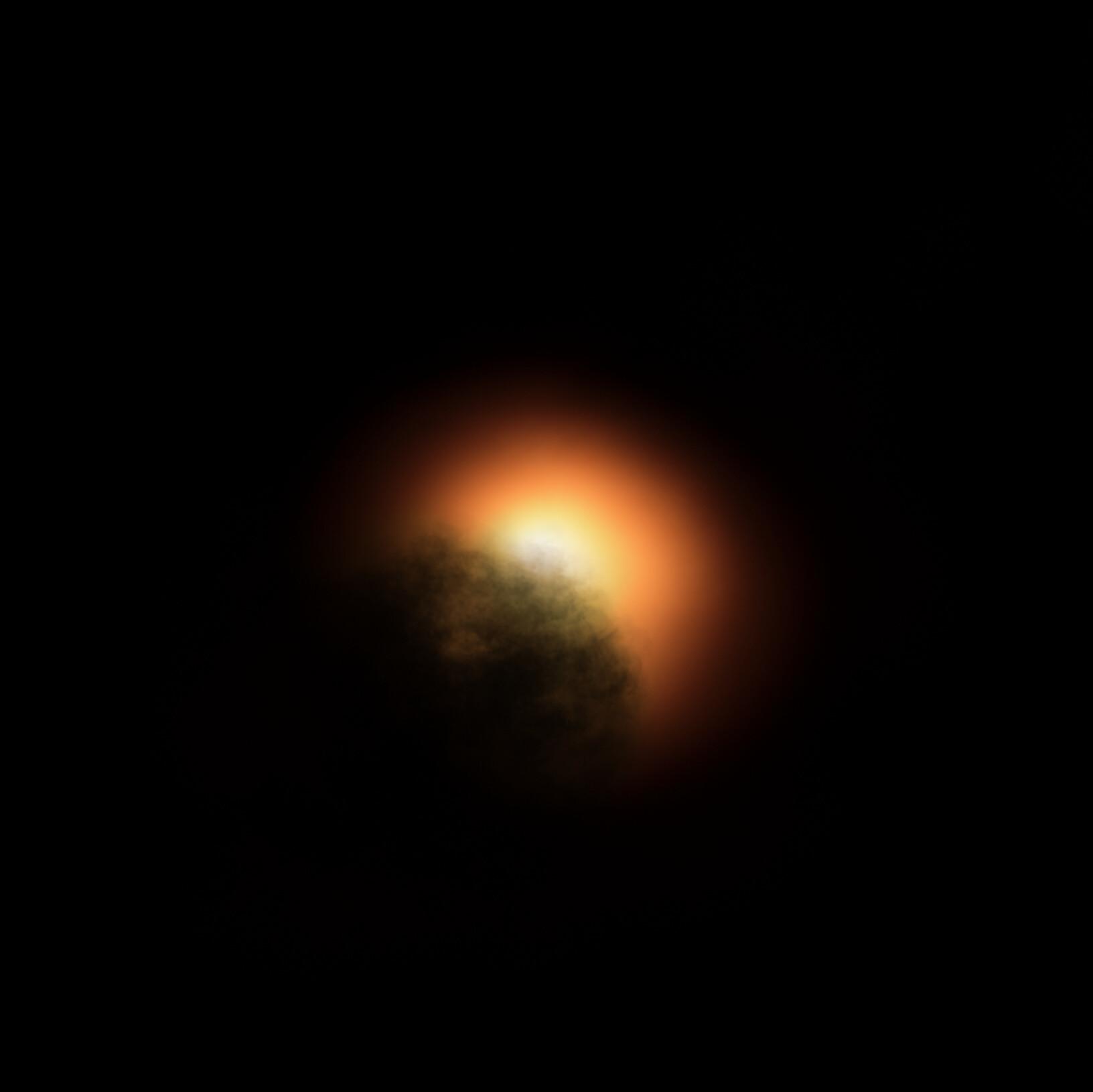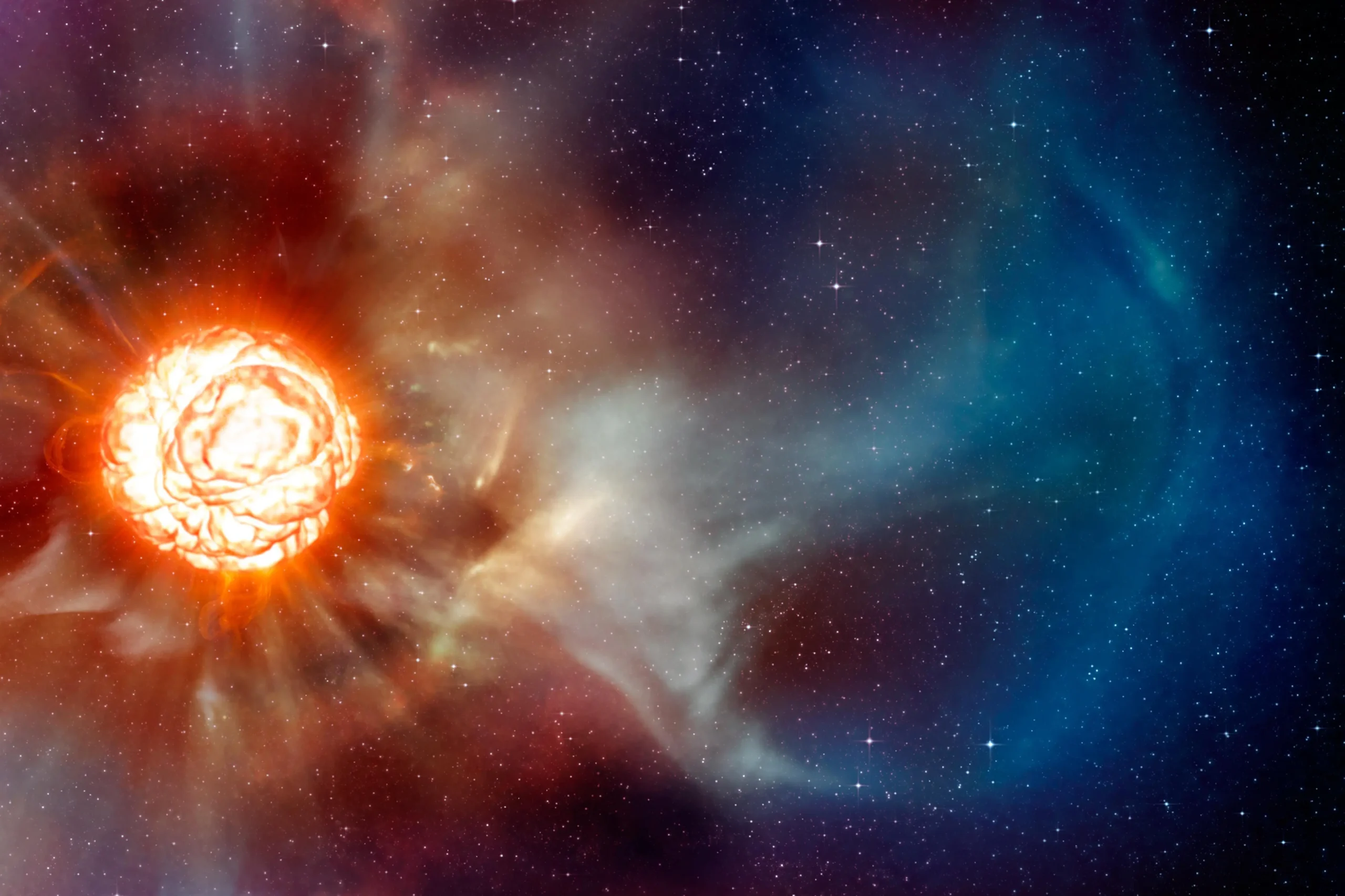Beetlejuice Beetlejuice, the sequel to the 1988 cult comedy-horror classic, was released last week and has already grossed 110 million in the United States and Canada in its opening weekend. This is more than the original earned in total over its entire theatrical run.
The clever wordplay in the name Beetlejuice comes from the star Betelgeuse, which has four accepted pronunciations in English. The creators of the original film chose the pronunciation that sounded more like “beetle juice.”

To mark the release of the Beetlejuice sequel, Universe Space Tech explores some of the most fascinating facts about the star that shares its name with the iconic character.
Betelgeuse is one of the brightest stars in the night sky
Betelgeuse is a semiregular variable star, meaning its brightness changes periodically as seen from Earth. The star’s light amplitude also varies with each cycle, typically ranging between magnitudes 0.0 and 1.6. When observed at its average magnitude of 0.5, Betelgeuse ranks as the tenth-brightest star in our night sky.

Betelgeuse is easily spotted due to its reddish-orange hue. Located in the upper left corner of Orion (or the bottom right if observed from the Southern Hemisphere), it’s visible from almost every location on Earth, except Antarctica. The star is also a part of the Winter Triangle, an asterism formed by the three brightest stars in the winter sky.
Scientists are still working to pinpoint the exact distance to Betelgeuse, with the most widely accepted estimates placing it between 400 and 600 light years from Earth. This gives the star another distinction: in addition to being one of the brightest, it’s also among the most distant stars in the Milky Way that can be seen with the naked eye.
Betelgeuse is 400 times larger than the Sun
Betelgeuse isn’t only one of the brightest stars but also one of the largest. Its estimated radius is between 600 and 800 times that of the Sun. If Betelgeuse were placed at the center of our Solar System, its smallest estimated size would extend to Mars’ orbit, while at its largest, it would reach as far as Jupiter. Given its colossal scale, it’s no surprise that Betelgeuse became the first star, after the Sun, to be photographed with visible surface details, including star spots.

The star’s immense size classifies it as a red supergiant. Although Betelgeuse is only a few tens of millions of years old—a relatively short lifespan for a star—it has already exhausted its hydrogen fuel, leading to rapid expansion. During this phase of stellar “agony,” the star ejects vast amounts of matter into the surrounding space.
The mystery of Betelgeuse’s color
Betelgeuse is known for its distinctive reddish color, first noted by the ancient astronomer Ptolemy in the 2nd century CE. However, Chinese astronomers, writing three centuries earlier, described Betelgeuse as a yellow star. Additionally, in the 1st century BCE, the Roman astronomer Gaius Julius Hyginus compared the color of the “star in Orion’s right shoulder” to that of Saturn, which is known for its yellow hue.

If this isn’t a mistake or mistranslation, it suggests that Betelgeuse began its transformation into a red giant roughly 2,000 years ago and currently has a mass of about 14 times that of the Sun. This information is crucial for astronomers, as it helps them estimate the star’s remaining lifespan.
The ‘Great Dimming’ of Betelgeuse
While the color change of Betelgeuse from two thousand years ago is still debated, its recent ‘Great Dimming’ was observed directly. This event, which occurred from 2019 to 2020, saw Betelgeuse’s visible magnitude diminish from 0.5 to 1.5, even pushing it out of the top twenty brightest stars in the night sky. Some reports even speculated that Betelgeuse might be on the verge of exploding.

Naturally, Betelgeuse didn’t explode. By February 2020, the star’s brightness had stabilized and returned to normal. But what was behind the ‘Great Dimming’?
Astronomers have suggested two main explanations for the phenomenon: star spots and dust clouds. Subsequent observations, including data from the Hubble Space Telescope, indicate that both factors played a role. Research found that the dimming began when a region on Betelgeuse’s surface cooled. Then, the ejected gas condensed into dust and partially obscured the star, resulting in its apparent fading.
Betelgeuse is suspected of cannibalism
Betelgeuse is a solitary star with no known companions, which complicates efforts to accurately estimate its mass. However, it’s possible that Betelgeuse was once part of a binary system and may have ‘consumed’ its companion.

Betelgeuse rotates significantly faster than most red supergiants, which suggests an unusual history. Some astronomers propose that as Betelgeuse aged and expanded, it may have consumed a neighboring star. This may have accelerated its rotation and led to a form of “rejuvenation.” If true, Betelgeuse could be older than previously estimated.
When will Betelgeuse explode?
Did Betelgeuse consume a neighboring star or recently change color? These aren’t just theoretical questions for scientists. The answers are crucial for addressing a more pressing issue that fascinates even those outside astronomy: when will Betelgeuse explode?

The scientific community widely agrees that Betelgeuse will eventually collapse and become a supernova. Fortunately, because of the star’s great distance, this event poses no threat to Earth. However, it promises to be a spectacular celestial display. Estimates suggest that at its peak, the supernova could shine as brightly as the full Moon and be visible even during the day. It’s not surprising that pseudoscientific publications tend to sensationalize the idea of Betelgeuse exploding soon.
As is often the case, the reality is more complex. The timing of Betelgeuse’s explosion depends on several factors, primarily its mass and how long it has been in its red giant phase. If recent data suggesting it only recently entered this phase is correct, we might need to wait another million years before Betelgeuse becomes a supernova.
Of course, other estimates have been proposed alongside it, and many of Betelgeuse’s physical parameters are still uncertain. Nevertheless, most scientists agree that Betelgeuse won’t go supernova for at least another hundred thousand years. So, Hollywood has plenty of time to make more Beetlejuice sequels.


